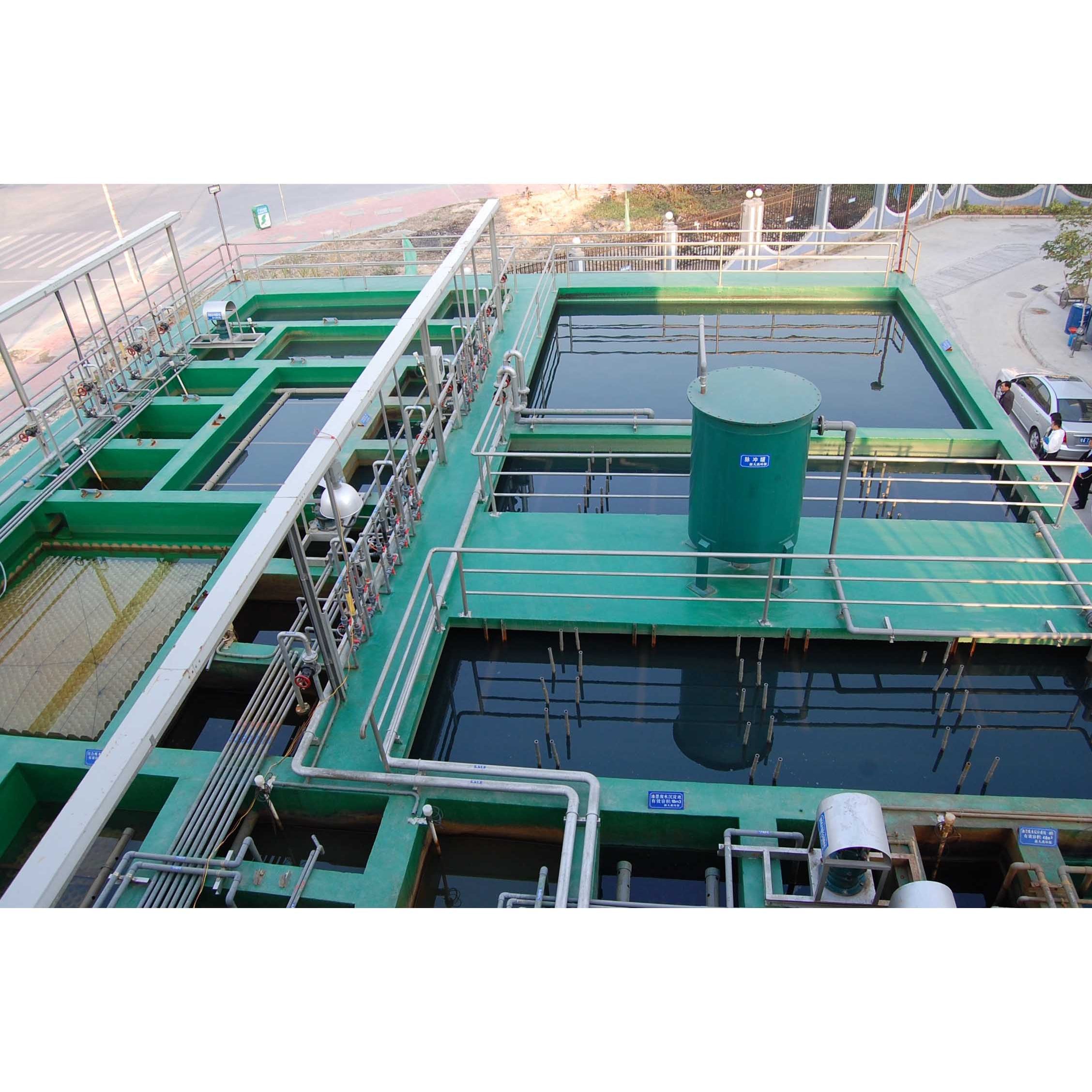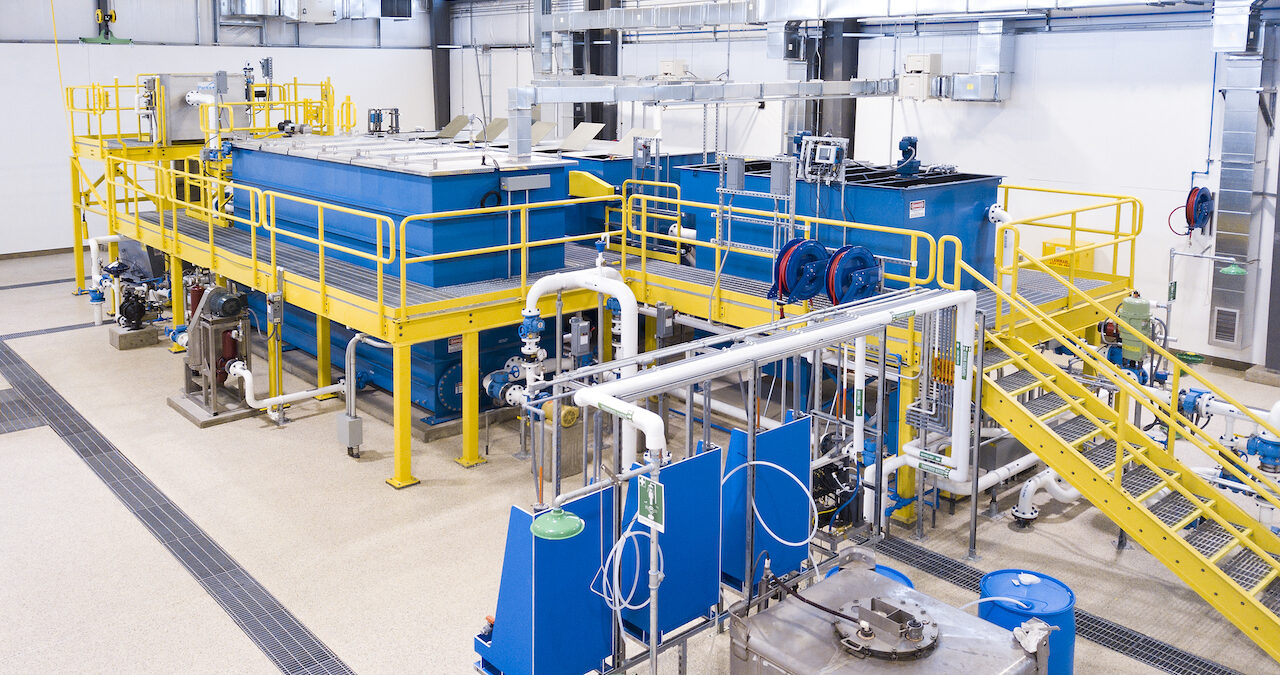Industrial Waste Water Treatment-- Industrial-Grade Water Purification and Purification Solutions
Industrial Waste Water Treatment-- Industrial-Grade Water Purification and Purification Solutions
Blog Article
Key Techniques in Hazardous Waste Water Therapy Procedures
The treatment of industrial wastewater is a critical element of ecological administration, including a series of methods designed to minimize the impact of contaminants. From the essential physical methods that separate solids to the sophisticated chemical and biological procedures that target certain toxins, each strategy plays a vital duty in accomplishing water top quality criteria. Developments in innovations such as membrane layer filtration and advanced oxidation processes use innovative solutions for improving therapy efficacy. Recognizing just how these techniques adjoin and their ramifications for sustainability increases essential concerns regarding the future of wastewater monitoring in sector.
Physical Therapy Techniques
Just how properly can physical treatment approaches deal with the complexities of commercial wastewater? Physical therapy techniques play a pivotal function in the preliminary stages of wastewater administration, focusing mostly on the removal of solids and large particulates. Techniques such as filtering, flotation protection, and sedimentation are important for reducing the focus of put on hold solids, consequently enhancing the efficiency of succeeding therapy processes.
Sedimentation involves the gravitational settling of solids, permitting for the splitting up of larger materials from the wastewater. This method is specifically effective in clearing up water prior to chemical or organic treatments.
Furthermore, flotation methods, which utilize air bubbles to raise suspended solids to the surface area for removal, are efficient in dealing with wastewater with high focus of fats, oils, and greases. On the whole, physical therapy techniques act as an essential initial step in the thorough management of commercial wastewater, guaranteeing that the lots on succeeding treatment phases is lessened and boosting total treatment efficacy.
Chemical Treatment Methods
While physical treatment methods prepared for effective wastewater management, chemical treatment methods are necessary for attending to the extra complicated impurities typically discovered in industrial effluents. These methods utilize numerous chemical representatives to speed up, reduce the effects of, or oxidize hazardous compounds, ensuring a much more comprehensive removal of toxins.
One usual technique is coagulation and flocculation, where chemical coagulants such as aluminum sulfate or ferric chloride are included in advertise the aggregation of suspended bits. This process improves solid-liquid separation, minimizing turbidity and boosting water high quality. Additionally, neutralization procedures are used to readjust the pH of wastewater, using bases or acids to counteract acidic or alkaline streams, specifically.
Oxidation-reduction responses play a vital function in derogatory organic impurities and virus. Chemical oxidants like ozone, chlorine, or hydrogen peroxide are utilized to damage down complex organic compounds, making them much less dangerous or more biodegradable. Advanced oxidation processes (AOPs) integrate multiple oxidation techniques to improve pollutant removal performance.
Organic Therapy Processes
The performance of wastewater treatment is considerably enhanced by organic treatment processes, which harness the natural metabolic activities of bacteria to decompose organic matter and get rid of pollutants. Industrial Waste Water Treatment. These procedures primarily entail aerobic and anaerobic food digestion, each customized for details kinds of wastewater
Cardio treatment processes make use of oxygen to support microbial growth, promoting the malfunction of natural pollutants into carbon dioxide and water. Common techniques include turned on sludge systems, where oygenation containers promote the blending of wastewater with bacteria, and flowing filters, which urge biofilm development on media surfaces.
Conversely, anaerobic therapy processes take place in the absence of oxygen, utilizing anaerobic bacteria to disintegrate raw material, resulting in biogas production, a renewable resource source. Anaerobic digesters are often employed in commercial settings for this try this out purpose, properly reducing the quantity of sludge while generating beneficial biogas.
The option of an organic treatment method depends on wastewater features, therapy objectives, and regulatory criteria. The integration of biological procedures in wastewater treatment not just boosts toxin removal efficiency but likewise promotes sustainability by reducing chemical use and supporting source healing.
Advanced Oxidation Processes

Common AOP techniques consist of Fenton's photocatalysis, reagent, and ozonation. Fenton's reagent, a combination of hydrogen peroxide and ferrous iron, militarizes the development of hydroxyl radicals, making it effective for dealing with wastewater consisting of phenolic substances and other stubborn substances. Ozonation makes use of ozone as a powerful oxidant, capable of weakening a wide variety of natural pollutants while all at once sanitizing the effluent. Photocatalysis utilizes light-activated drivers, such as titanium dioxide, to enhance oxidation responses and remove pollutants.
AOPs provide numerous advantages, including decreased sludge production and the capacity to deal with wastewater with high concentrations of natural contaminants. The execution of AOPs requires careful factor to consider of operational specifications and cost-effectiveness, making certain that these sophisticated techniques are appropriately integrated right into existing wastewater therapy systems.
Membrane Filtering Technologies

Microfiltration works for removing put on hold solids and bacteria, while ultrafiltration targets smaller organic particles and viruses. Nanofiltration bridges the void in between ultrafiltration and turn around osmosis, effectively removing organic substances and divalent ions. Reverse osmosis supplies the highest degree of purification, utilized primarily for desalination and removing mono-valent ions.
Membrane layer modern technologies offer many advantages, click for info consisting of reduced energy usage compared to traditional therapy methods, modular layout for scalability, and the capacity for water healing and reuse. Nonetheless, challenges such as membrane fouling and the requirement for normal maintenance should be addressed to guarantee system efficiency. In general, membrane layer filtering innovations represent an important part of contemporary commercial wastewater treatment methods, advertising sustainability and source preservation in water administration.
Verdict
To conclude, commercial wastewater treatment uses a diverse range of methods, consisting of physical, chemical, organic, and advanced approaches. Each technique plays a vital role in properly addressing different contaminants, improving water quality, and advertising source sustainability. The combination of these methods fosters a comprehensive treatment approach, guaranteeing that commercial effluents satisfy governing criteria while reducing ecological influence. Proceeded innovations in these approaches will certainly additionally boost the efficiency and performance of wastewater therapy procedures in industrial setups.
The therapy of industrial wastewater is an essential element of environmental management, involving a range of methods created to mitigate the influence of contaminants.Exactly how effectively can physical therapy approaches deal with the intricacies of industrial wastewater?Advanced oxidation procedures (AOPs) represent a sophisticated approach in industrial wastewater treatment, made to successfully break down natural pollutants that are typically resistant to traditional therapy approaches (Industrial Waste Water Treatment).In verdict, industrial wastewater treatment uses a varied variety of strategies, consisting of physical, chemical, biological, and progressed techniques. Continued advancements in these methodologies will certainly better improve the performance and efficiency of wastewater therapy procedures in commercial settings
Report this page